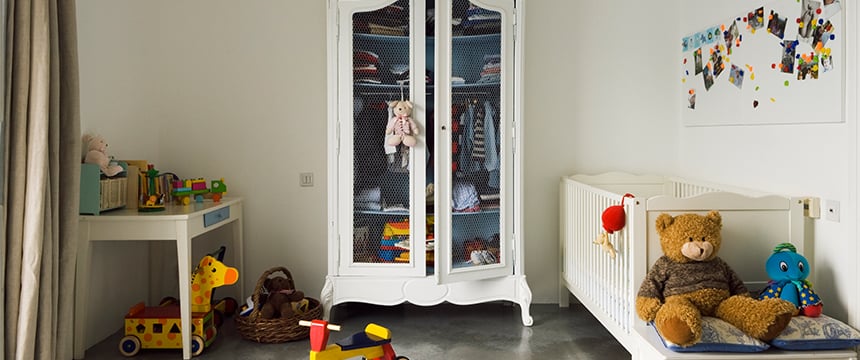
On April 19, 2023, in a 3-to-1 vote, the Consumer Product Safety Commission (CPSC) determined that ASTM1 F2057-23 meets the requirements of the Stop Tip-overs of Unstable, Risky Dressers on Youth (STURDY) Act and adopted it as a mandatory standard. The final rule will be published in the Federal Register, and the CPSC encouraged manufacturers to act expeditiously to ensure compliance before the effective date 120 days from publication.
As discussed previously,2 this decision comes after months of uncertainty in the industry. On November 25, 2022, the CPSC published a mandatory federal safety standard for clothing storage units (CSUs) that purported to “significantly change the way clothing storage units are tested and labeled.”3 The standard had an effective compliance date of May 24, 2023.4 However, on December 23, 2022, as part of the fiscal 2023 omnibus spending bill, President Biden signed the STURDY Act into law, requiring the CPSC to adopt ASTM F2057-19—a voluntary standard—as a mandatory standard within a year of the law’s enactment, so long as the standard meets the performance requirements set out in the Act.5
In February 2023, ASTM updated F2057 and published the revised standard.6 CPSC staff then reviewed the revised standard and provided a briefing package to the Commissioners. After the CPSC vote was delayed for several weeks, the April 19th meeting, vote, and approval provides long-awaited certainty for manufacturers who were previously torn between two potentially applicable rules. Now, the industry knows that its CSU products must comply with ASTM F2057-23.
The CPSC did not reach this decision without disagreement, however. Commissioner Richard Trumka Jr. voted “No”7 and proposed three motions and eight amendments—all of which were rejected by the other Commissioners by 3-to-1 votes. In an opening statement, Commissioner Trumka characterized manufacturers as “greedy” and expressed his view that the CPSC’s November 2022 rule was the “best and only” solution to save children’s lives. In his view, the CPSC was not required or permitted to adopt the new rule as it failed to meet STURDY’s requirements. He also stated that fear and convenience should not prevent the CPSC from doing the “right thing” in rejecting a “favor to industry.”
While the other Commissioners commended Trumka’s passion, they did not share his views that the updated ASTM standard’s protections are “paltry.” In declining to support Trumka’s proposed motions and amendments, Commissioner Mary Boyle noted, that “people of goodwill” can reach different conclusions on this issue but that she approved the updated version of the ASTM standard. Commissioner Peter Feldman stated that he could not support the proposed motions or amendments and that the delays and confusion on this issue have helped no one. Chairman Alex Hoehn-Saric acknowledged that people are passionate about this issue and directed the industry to work to meet the new mandatory standard.
Ultimately, the industry finally has the certainty it needs to move forward and to work to comply with and meet the requirements of ASTM F2057-23.
1 The American Society for Testing and Materials (ASTM) promulgates voluntary standards that are available for purchase, including ASTM F2057: Standard Safety Specification for Clothing Storage Units.
2 Erik K. Swanholt, Kristin M. Sikora, and Evan L. Hamling, CPSC Focuses on Child Safety in the Home, Manufacturing Industry Advisor (Jan. 20, 2023), https://www.foley.com/en/insights/publications/2023/01/cpsc-focuses-child-safety-home.
3 CPSC Approves New Federal Safety Standard for Dressers and Other Clothing Storage Units; Rule Aims to Reduce Injuries and Deaths Associated with Tip Overs, CPSC (Oct. 19, 2022), https://www.cpsc.gov/Newsroom/News-Releases/2023/CPSC-Approves-New-Federal-Safety-Standard-for-Dressers-and-Other-Clothing-Storage-Units-Rule-Aims-to-Reduce-Injuries-and-Deaths-Associated-with-Tip-Overs.
4 87 FR 72598, https://www.federalregister.gov/documents/2022/11/25/2022-24587/safety-standard-for-clothing-storage-units.
5 See S. 3232, 117th Cong. § 2(c)(1) (2022), https://www.congress.gov/bill/117th-congress/senate-bill/3232/text.
6 Furniture Today Staff, ASTM releases revised testing standard to combat furniture tip-overs, Furniture Today (Feb. 8, 2023), https://www.furnituretoday.com/industry-issue/astm-releases-revised-testing-standard-to-combat-furniture-tip-overs.
7 All quotations in the remaining paragraphs are from the CPSC Decisional Implementation of STURDY § 201(d) Determination Regarding ASTM F2057 held on April 19, 2023. A recording of that meeting is available at https://www.youtube.com/watch?v=mMkBAkQSDN0.

